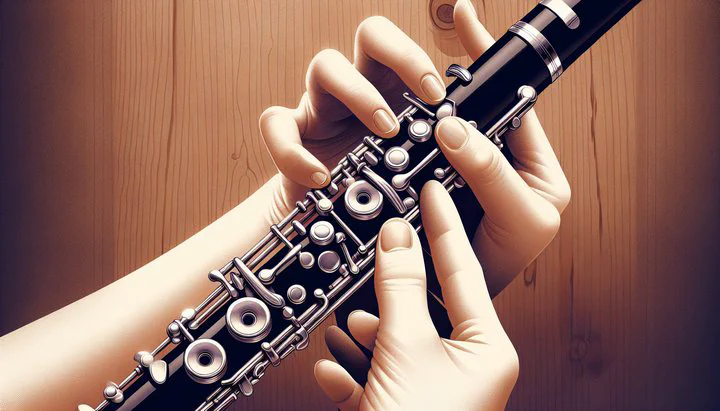Repairing Wobbly Clarinet Top Joint

Repairing Wobbly Clarinet Top Joint
Is your clarinet not sounding as great as it should? You might be dealing with a wobbly clarinet top joint, a common issue that can affect your playing and sound quality. This article will guide you through understanding, fixing, and maintaining your clarinet to keep it in top shape.
Understanding the Wobbly Clarinet Top Joint
Have you ever felt your clarinet’s top joint wobbling as you play? This is what we call a wobbly clarinet top joint, and it can be a real problem for your sound and performance. A clarinet needs a secure connection between its parts to produce clear and stable notes. When the joints are loose, the instrument might not sound right, and playing can become frustrating.
So, what causes this wobble in the first place? One of the main reasons is the wear and tear of the cork that lines the joints. Cork acts like a cushion, helping to hold the pieces of your clarinet snugly together. Over time, this cork can wear down or dry out, leading to a loose fit. Sometimes, a wobbly clarinet top joint might also be due to misalignment. If the parts of your clarinet aren’t fitting together just right, it can cause them to move around more than they should.
Understanding why your clarinet’s top joint wobbles is the first step to fixing it—and with a little know-how, you’ll be able to prevent it from happening again. In the next sections, we’ll guide you through the process of repairing a clarinet’s cork and offer tips on wobbly clarinet top joint repair to get your clarinet back in top shape. Stay tuned to learn how you can take care of your clarinet like a pro!
Fixing a Loose Clarinet Joint: Step-by-Step Guide
Ready to tackle that wobbly clarinet top joint? Let’s dive into fixing a loose clarinet joint with some simple steps. Don’t worry! You won’t need anything too fancy—just a few basic tools and a bit of patience. You’ve got this!
First, gather your materials. You’ll need cork grease, a small piece of new cork, a utility knife, and some sandpaper. You might also want to have a small cloth handy for cleaning. Make sure you have a safe, well-lit place to work, and be careful with the knife!
Start by removing the old cork. Carefully use the utility knife to cut away the worn cork from the joint. Be gentle—it’s important not to scratch the clarinet itself. Once the old cork is gone, use the cloth to clean the joint area. This ensures that no bits of old cork or dirt will interfere with the new cork.
Now, cut a piece of new cork to fit the joint. It should be just the right size to wrap snugly around the joint’s edge. Once it’s cut, sand the edges of the cork lightly to smooth it out. You want the cork to fit perfectly without any rough spots.
To attach the cork, apply a thin layer of cork grease to the joint and carefully wrap the new cork around it. Press it firmly so that it sticks well. Allow it some time to set before testing it out. If the cork doesn’t fit perfectly, don’t worry. You might just need to sand it a little more or trim it to get that perfect snug fit.
Remember, patience is key when repairing a clarinet’s cork. If you encounter any issues, like the cork not sticking properly, double-check your materials and try again. With these steps, you’ll have that wobbly clarinet top joint fixed in no time, and your clarinet will feel like new. Keep reading for tips on stabilizing clarinet joints to prevent future wobble!
Maintaining and Stabilizing Clarinet Joints
Once you’ve fixed that wobbly clarinet top joint, it’s important to keep it stable. Regular maintenance is key to ensuring your clarinet stays in great shape and plays beautifully. Taking care of your instrument now can prevent future issues and ensure you enjoy making beautiful music for years to come.
One of the easiest ways to maintain your clarinet is by regularly applying cork grease. This helps keep the cork supple and prevents it from drying out or cracking. Make it a habit to check the cork every time you play. A little bit of cork grease goes a long way to ensure the joints fit snugly together. Just be sure not to overdo it, as too much grease can attract dirt.
Proper storage is another crucial aspect of stabilizing clarinet joints. When you’re not playing, always keep your clarinet in its case. This protects it from dust, humidity, and temperature changes, which can all affect the cork and the wood. If you’re playing in a particularly humid or dry environment, consider using a humidity control pack in your case to protect your clarinet.
Regularly check your clarinet for any signs of wear or misalignment. If you notice the joints becoming loose again, it might be time for some minor repairs or adjustments. Don’t hesitate to seek professional help if the problem persists or if you’re unsure about handling the repairs yourself. Sometimes a visit to a professional can provide peace of mind and ensure your instrument is in top condition.
Engaging with fellow clarinet enthusiasts online or in your community can provide valuable insights and support. You might even discover new tips and tricks to keep your clarinet in top condition. For more tips and advice on clarinet care, be sure to explore resources and communities where you can learn from fellow musicians. Remember, keeping your clarinet well-maintained not only improves your performance but also prolongs the life of your instrument. With a bit of care and attention, you can enjoy playing your clarinet for many years to come.